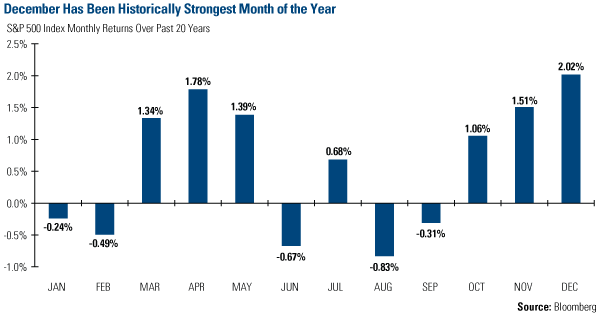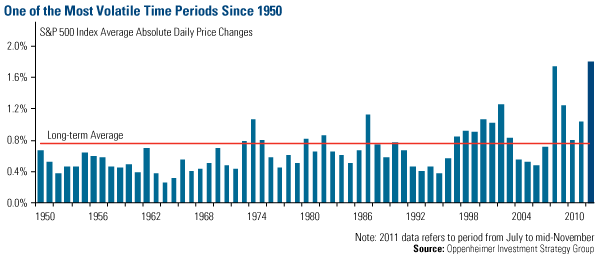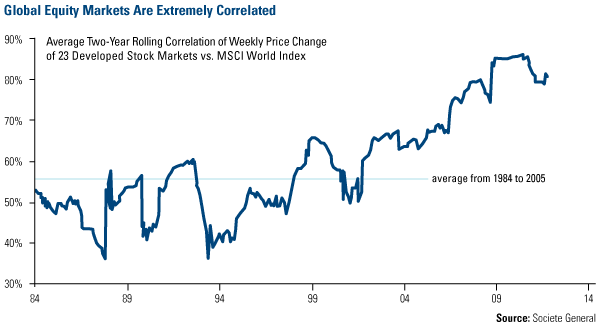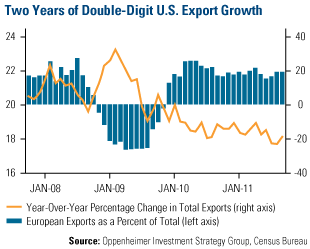


Oppenheimer is one bull on U.S. equities, as the firm believes that investors have overestimated the negative impact the crisis in Europe has on the U.S. economy and corporate profitability. Oppenheimer points to the fact that the U.S. is less reliant on Europe, with only 18 percent of U.S. exports heading across the Atlantic. This has fallen from 23 percent over the past two years. Meanwhile, U.S. export growth has averaged “double-digit year-over-year growth since the end of 2009,” says Oppenheimer.

“Corporate America remains a pillar of potency and stability,” says Oppenheimer. Multinational companies have diversified their revenue streams by heading into fast-growing markets while still keeping their costs under control, says Oppenheimer. Additionally, cash remains at record highs, which provides a cushion to handle unforeseen issues.
Positive news came out of China this week too. For the first time in three years, the People’s Bank of China announced a cut in the reserve requirement ratio (RRR) by 50 basis points. This is a step in the right direction, says Director of Research John Derrick, as China tries to balance too-low growth with too-high inflation. Over the past three years, China has been raising the RRR to curtail loan growth, and this cut is the first step to promoting loan growth. The RRR cut was also a part of a global central bank coordination to make sure there was enough liquidity in the system, says John.
China’s RRR cut happened a month sooner than ISI expected, but the stars may be aligning in China. If you look at where the country’s purchasing managers’ index, the leading economic indicators level and inflation were during the last RRR cut three years ago, these figures were all about where they are now, says ISI.
The energy sector continues to see merger and acquisition activity (See a previous discussion in Case Study: Buyouts Crystallize Value in the Market). In November, a pipeline deal was announced between Enbridge and Enterprise Products Partners, causing West Texas Intermediate (WTI) oil prices to jump. As a result of the companies’ agreement, oil which had been flowing from the Gulf Coast to the Midwest will actually be reversed. Now, the landlocked crude in Cushing, Oklahoma will be delivered to the refiners in the Houston-area. The Wall Street Journal says the 500-mile line “could ship an initial 150,000 barrels of crude per day by the second quarter of next year.”
Evan Smith, co-manager of the Global Resources Fund (PSPFX), discussed the effect on WTI oil prices with Yahoo the week the deal was announced. Evan says that for several months there’s been a discount in the West Texas Intermediate compared to Brent crude oil. Now that the glut of oil parked in the Midwest will move to the Coast, sentiment improved and WTI pricing moved more in line with Brent crude.
Lately investors have been inundated with negative news surrounding Europe. It’s important to put these facts in perspective along with other positive signs in the market, including those that we are seeing in the U.S., China and the energy sector. While the past two turbulent years have made it difficult for investors to remember the benefits of long-term investing, Oppenheimer believes that, “when the future return potential of an asset class is widely doubted, the exact opposite tends to occur.” We agree with this statement, as we believe great opportunities can be found during turbulent times like today.
